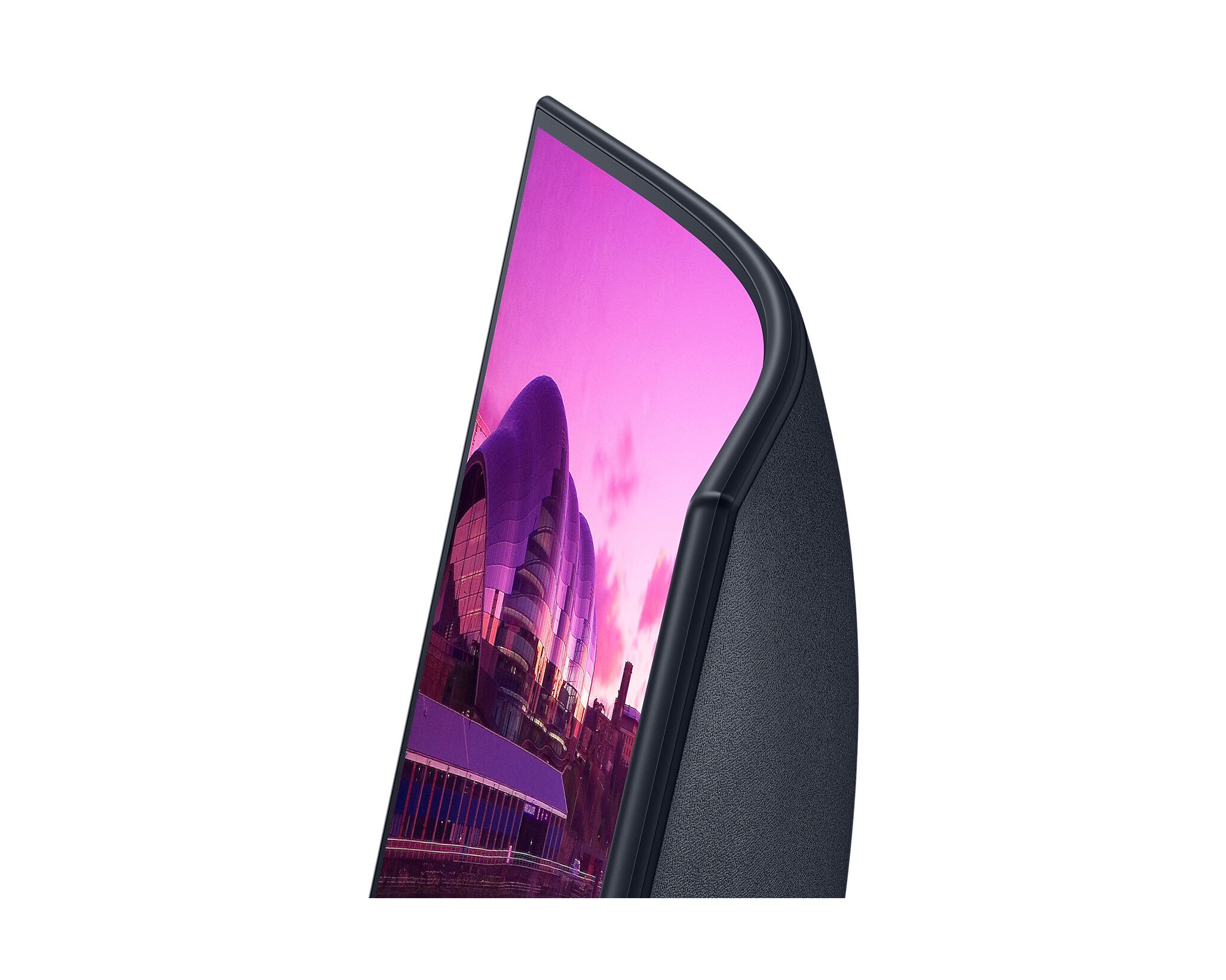



































£158.17*
- Resolution 1920 x 1080 Full HD
- Diagonal 27"
- Panel type VA
- Refresh Rate 75Hz



Product information
Curved Monitor S39C
- 1.000R Curved Panel
- Integrated Stereo Speakers
- Full HD Resolution
- Eye Saver Mode
- Flicker Free
Simply boldly curved
Discover our boldest curve. Born from years of development, this milestone changes the way we look at visuals and heralds the future of Samsung monitor technology.

Designed for the eye
Compared to conventional monitors, which usually have a lower curvature, the curvature of 1000R is adapted to that of the human eye and can therefore help to concentrate on work and immerse yourself in the game while gaming. It can also reduce eye strain and fatigue during prolonged use. A clinical study at Seoul National University Hospital shows that the closer it is to 1000R, the less eye fatigue.
Visionary minimalism
Next generation Samsung design. The striking aesthetics of the nearly bezel-less screen are accentuated by a textured back and a premium, slim stand. The result is a monitor that not only catches the eye, but also matches the décor.

Pure and fluid action
Enjoy smooth entertainment AMD FreeSync enables seamless gaming, while 75Hz can deliver smooth picture scenes. These brilliant images are combined with Game Mode and 1000R Curve to deliver a realistic gaming experience.

Comfort for the eyes
You should not underestimate the strain on your eyes when working at the monitor for a long time. That's why the T55 features Eye Saver Mode, which reduces fatigue-causing blue light emissions, while Flicker Free technology suppresses annoying screen flicker. So you can work or play longer on your monitor.
Ready for entertainment
Connect your devices easily via the convenient triple interface with HDMI, DP and D-Sub. Thanks to the built-in 5-watt speakers, you can enjoy your favourite movies or series without having to connect a speaker.
Technical data
| Name | Samsung S27C390EAU 27" VA Monitor, 1920 x 1080 Full HD, 75Hz, 4ms |
|---|---|
| Article number | 1000027807 |
| GTIN/EAN | 8806094713589 |
| Manufacturer SKU | LS27C390EAUXEN |
| EPREL ID | 1346972 |
| Model name | S27C390EAU |
| Brand | Samsung |
| Product Type | Monitor |
| Technology | LCD |
| Panel type | VA |
| Resolution | 1920 x 1080 Full HD |
| Diagonal | 27" |
| Aspect Ratio | 16:9 |
| Viewing angle - Horizontal | 178° |
| Viewing angle - Vertical | 178° |
| Contrast Ratio | 3,000 :1 |
| Response time | 4ms |
| Refresh Rate | 75Hz |
| Inputs | 1x 3,5mm Jack , 1x Displayport , 2x HDMI |
| Product width | 61.32 cm |
| Product height | 36.97 cm |
| Product depth | 11.25 cm |
| Weight | 3.8 kg |
| Colour | Black |
| EEK Spectrum | A to G |
| Energy efficency class | E |
| Delivery contents | HDMI Cable |
| Condition | New |
| Warranty | 24 Month |
| Warranty type | Bringin service Service and support information |
Downloads
Product safety
| Person responsible for the EU |
|---|
| Samsung Electronics GmbH |
| Am Kronberger Hang 6 |
| 65824 Schwalbach |
| Germany |
| sseg.comm@samsung.com |



